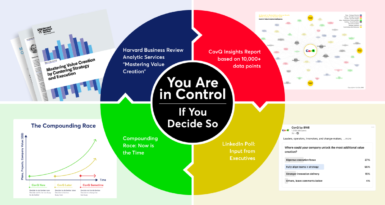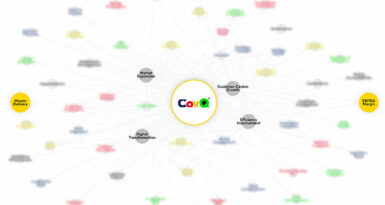
While this post is about organizational culture as opposed to national culture, I’ll touch on my non-U.S. background just to help set the scene.
I came from Ireland to New York City in the late ‘90s with no job or home lined up. All I had was a few hundred dollars to my name and a promise of a one-week couch crash from a friend whose roommate’s patience would turn into a pumpkin (one of those scary jack-o’-lantern ones) on night eight.
Lest I paint too challenging a picture, to my advantage I did have a graduate business degree from a great Irish university. But money was certainly an issue! So, from then on, I found my American journey dominated by two interwoven themes of: (1) intentional personal finance, and (2) professionally leveraging my outside observer perspective to find intentional ways to optimize employee/employer relationships for win/win outcomes.
Of late, as I’ve moved from being a Chief People Officer at global tech companies to being an Organizational Culture Doctor, I find these two themes thrust together once more. How? There’s a growing awareness of how the issue of “Cultural Debt” can cause a tangible drag on an organization’s growth.
Cultural Debt is accrued when a perception emerges within an employee base that the organization has broken a promise(s). Or, to put it another way, Cultural Debt often accrues when talk isn’t matched by walk – and there’s an erosion of trust. Cultural Debt can also accrue in the vacuum of intentional culture talk, where the core promises the organization is making to the team are ambiguous or unknown. In this case, individual managers may fill the void by making disparate commitments across different teams to motivate their people. When comparisons inevitably ensue, perceptions of unfair or inconsistent treatment can cause Cultural Debt – more anti-trust, more anti-goodwill.
Dang, this is looking like a minefield!
A quick word of optimism for the brand new startup – the good news there is that, much like my immigrant self coming from overseas with no credit history whatsoever, your organization begins its journey with a clean slate with zero Cultural Debt. The trick is to keep it that way!
So, let’s talk about solutions. To render this idea of Cultural Debt down to very simple, almost transactional, terms and offer some suggestions on how it can be effectively managed, I’ll turn to a familiar kind of debt: consumer credit. And, as a mental model for leaders to help them keep in mind the personal nature of Cultural Debt (you can’t be entirely transactional when you’re dealing with people), I’ll propose that they might seek to protect their organizational culture with the same level of attention as their personal FICO Score*. And the good people at FICO (fka Fair Isaac Corporation), who own the proprietary algorithm for that range of numbers between 300 and 850, have been kind enough to lay out guidelines for how to repair your credit and improve your FICO Score. This guidance seems quite useful when we think about managing Cultural Debt.
*This is a U.S.-specific framework but hopefully the ideas translate readily to other contexts.
Check Your Credit Report
The organizational culture analogy here would be to confront the data! Take a dispassionate look at the formal promises you’ve made to your team (e.g. in stated mission, vision, values, strategy, goals, or on your careers portal) and assess your performance in adhering to those formal commitments. Not sure where to begin? Having a look at what employees are saying about you on social media, e.g. Glassdoor, may provide a useful starting point.
Setup Payment Reminders
This might translate to establishing promise-keeping as a standing executive team agenda item. It could also mean setting a formal and sustainable feedback process/cycle with your entire team, e.g. a semi-annual anonymous company survey, where the team can provide input on ways that the work experience might be improved. The organizational leadership can then broadly share the results internally, along with thoughtful realistic goals on the data-driven issues/opportunities they will prioritize investing in. And, to keep everyone honest, cross-functional/cross-level teams should be assembled to drive the solutions.
Reduce The Amount of Debt You Owe
In your organization, have there been employee suggestions/requests that have been outstanding in the “under consideration” category for some time? People will appreciate closure one way or another – even if the answer is “not now.” So leaders could consider the moment when they’re, say, visibly committing to investing in the 1st, 2nd, and 3rd most popular suggestions from an employee survey to openly state that priorities 4 through 20 won’t be moving forward this year. Making fewer promises is a great way to allow you to keep a higher percentage.
Eager for more? : )
In Part II we’ll explore the specific guidance Fair Isaac (sounds like a handsome dude!) offers on the different components of the FICO score and extract lessons for minimizing Cultural Debt in your organization.
In the meantime, thank you for reading Part I, and please share your thoughts on Cultural Debt on social.




